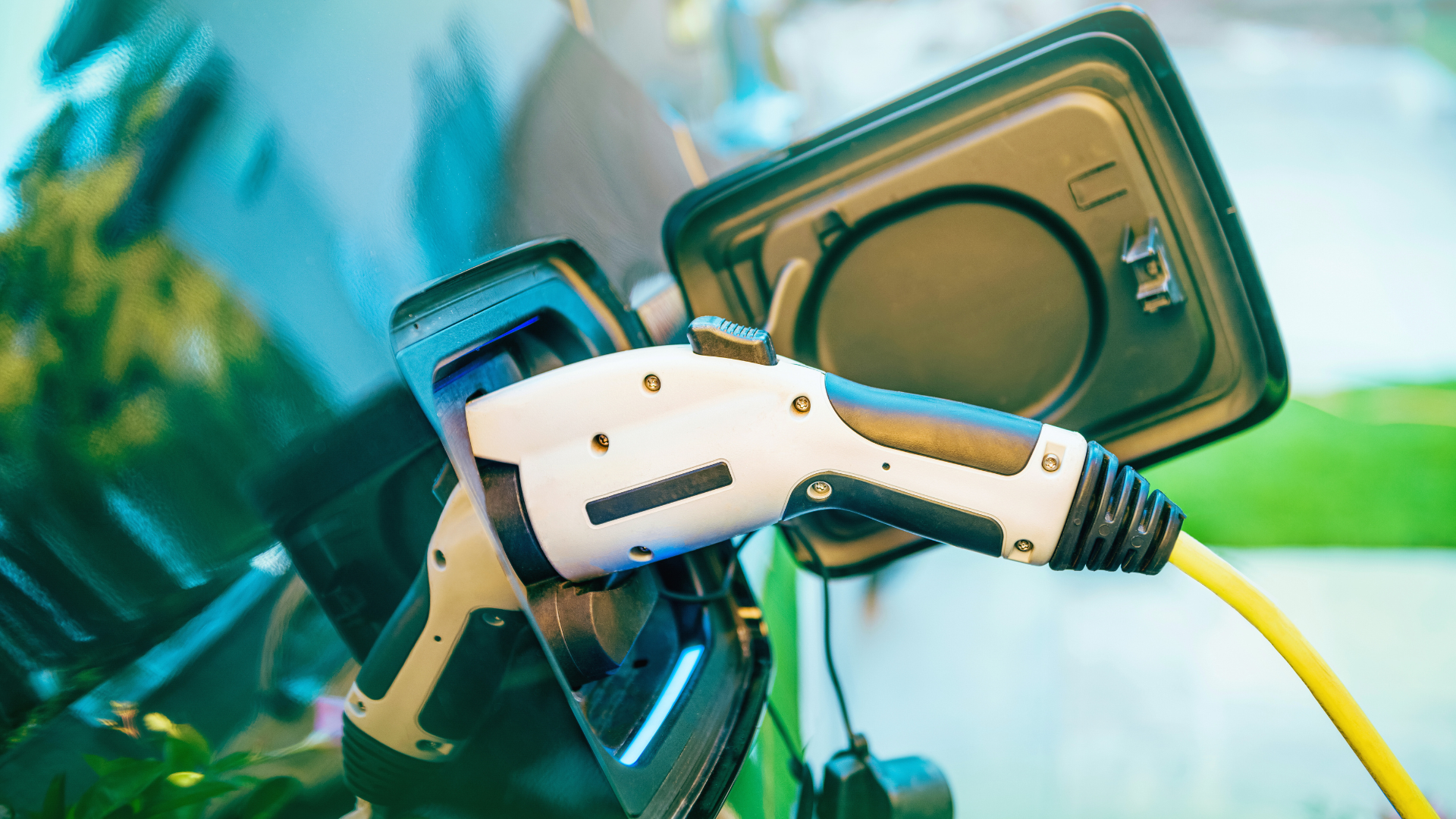

The integration of technology into green transportation systems represents a pivotal shift towards sustainability. Innovative solutions, such as electric vehicles, smart public transit, and advanced biking infrastructure, play crucial roles in reducing carbon emissions and promoting more environmentally friendly commuting options. These advancements not only address transportation inefficiencies but also enhance the overall user experience, making eco-friendly travel more appealing.
As urban areas expand, the demand for efficient and clean transit solutions grows. Technological advancements, such as ride-sharing apps, real-time traffic monitoring, and autonomous vehicles, contribute significantly to optimizing urban mobility. By streamlining transportation networks, technology helps decrease congestion and minimize the environmental impact associated with traditional transportation methods.
The potential of technology to transform green transportation cannot be underestimated. As society moves towards more conscious travel choices, the role of innovative solutions will continue to shape the future of eco-friendly transportation systems, paving the way for cities that prioritize sustainability.
Key Technologies Transforming Green Transportation
Advancements in technology are driving significant changes in green transportation systems. Key areas such as electric vehicles, alternative fuels, and the integration of renewable energy are at the forefront of this transformation.
Electric Vehicles and Electrification
Electric vehicles (EVs) are a cornerstone of green transportation. These vehicles utilize advanced battery technology to store energy, reducing reliance on fossil fuels. Key metrics include energy density, which affects how far an EV can travel on a single charge.
Modern fast charging stations are evolving, enabling quicker charging times and greater convenience for users. As battery technology advances, the industry sees improvements in both efficiency and lifespan, making electric vehicles more appealing. These advancements contribute to decreasing emissions, aligning transportation with sustainability goals.
Alternative Fuels and Biofuels
Alternative fuels, including biofuels, play a crucial role in decarbonizing transportation. Biofuels are derived from organic materials and have the potential to replace traditional gasoline and diesel. They offer a lower carbon footprint and can often utilize existing energy infrastructure.
Hydrogen fuel is another innovative alternative, promoting zero-emission vehicles. This fuel is generated through sustainable energy sources and can be stored and transported efficiently. As technology improves, the production and distribution of alternative fuels will become more economically viable, enhancing their role in the green transportation landscape.
Renewable Energy Integration
Integrating renewable energy into transportation systems is essential for creating sustainable energy solutions. Solar, wind, and hydroelectric power can be harnessed to charge electric vehicles and power transportation infrastructures.
This integration reduces dependence on non-renewable energy sources, further supporting emission reduction goals. Smart energy systems can optimize the use of renewables, ensuring that transportation is not only greener but also more efficient. As more electric vehicles come onto the market, the ability to use clean energy directly impacts the overall sustainability of transportation networks.
Digital Innovation and Smart Infrastructure
Digital innovation enhances green transportation through advanced technologies. These technologies integrate automation, data analytics, and blockchain, leading to improved efficiency, transparency, and sustainability in transport systems.
Automation and Artificial Intelligence
Automation and artificial intelligence (AI) are transforming green transportation. They enable more efficient traffic control systems, optimizing vehicle routing and reducing congestion.
AI algorithms analyze real-time data to adjust transit schedules, enhancing responsiveness. For instance, AI can predict maintenance needs in electric vehicles, minimizing downtime and extending vehicle life. This proactive approach maximizes vehicle usage while maintaining low emissions.
Moreover, autonomous vehicles improve safety and efficiency. They reduce human error and ensure consistent adherence to eco-friendly practices. Automation thus plays a crucial role in creating a sustainable transportation ecosystem.
Data Analytics and Big Data
Data analytics and big data are essential for optimizing transportation networks. They provide insights into travel patterns, vehicle performance, and user behavior.
Transport systems can analyze vast amounts of data from multiple sources, including mobile applications and tracking devices. This analysis facilitates informed decision-making and resource allocation.
For example, big data informs the placement of electric vehicle charging stations, ensuring accessibility in high-demand areas. Effective data management leads to tailored services that meet consumer needs while minimizing environmental impact. Leveraging data analytics drives innovation in green transportation.
Blockchain Technology for Transparency
Blockchain technology enhances transparency in transportation systems. Its decentralized nature ensures that all transactions, such as fuel purchases and vehicle maintenance records, are securely documented.
This transparency builds trust among stakeholders, allowing for better compliance with environmental standards. For example, blockchain can track the lifecycle of electric vehicle batteries, ensuring sustainable practices in production and disposal.
Additionally, smart contracts can automate processes like toll payments or fleet management, minimizing administrative burdens. Implementing blockchain creates a more accountable and efficient transportation ecosystem, aligning with green initiatives.
Smart Infrastructure Development
The development of smart infrastructure is pivotal for integrating technology into transportation. Smart infrastructure incorporates sensors, connectivity, and control systems to facilitate real-time monitoring and management.
Smart traffic lights adapt to traffic flow, reducing idling time and emissions. Likewise, connected vehicles communicate with infrastructure, sharing crucial data that improves overall system efficiency.
Investing in smart infrastructure supports the transition to electric and hybrid vehicles. This approach ensures that charging stations and maintenance facilities are strategically located, further promoting sustainable transport. Smart infrastructure thus underpins the future of efficient and eco-friendly transportation systems.
Environmental Impact and Policy Considerations
The integration of technology in green transportation systems significantly influences environmental outcomes and informs policy frameworks. Key areas of focus include emissions reduction, energy consumption, and the effects of noise pollution on conservation.
Reducing Greenhouse Gas and CO2 Emissions
Green transportation technologies, such as electric and hydrogen fuel cell vehicles, can drastically lower greenhouse gas emissions. By replacing traditional gasoline and diesel engines with cleaner alternatives, these systems contribute to diminishing carbon dioxide (CO2) emissions.
Statistics show that electric vehicles (EVs), when powered by renewable energy, can reduce emissions by up to 70% compared to conventional vehicles.
Policies promoting EV adoption, such as tax incentives and infrastructure investments, encourage the shift towards lower-emission transportation.
Lowering Energy Consumption and Carbon Footprint
Technological advancements in green transportation also focus on lowering overall energy consumption. Energy-efficient vehicles consume less electricity or fuel, which in turn reduces the associated carbon footprint.
Innovative practices like regenerative braking and optimized route planning enhance energy efficiency.
Collective efforts, like promoting public transportation and car-sharing platforms, further decrease individual energy demand.
Policies supporting renewable energy developments are crucial for maximizing the benefits of these technologies.
Noise Pollution and Conservation
The transition to green transportation can reduce noise pollution, which impacts both urban environments and wildlife. Electric vehicles operate more quietly than conventional ones, contributing to a more peaceful urban landscape.
Research indicates that lower noise levels can enhance the quality of life for residents and support wildlife conservation efforts.
Policies should focus on urban planning that incorporates green transportation systems to mitigate noise pollution’s detrimental effects.
By prioritizing these aspects, cities can foster healthier environments for both people and wildlife.
Integration and Future Opportunities
The integration of technology into transportation systems offers various opportunities for improving public transit and promoting sustainable urban mobility. Targeting infrastructure development and leveraging emerging technologies can enhance accessibility and efficiency while accommodating active modes such as cycling and walking.
Public Transit and Sustainable Urban Mobility
Modern public transit systems increasingly utilize smart technologies to enhance user experience and operational efficiency. Real-time tracking, mobile ticketing, and integrated fare systems allow commuters to plan journeys effectively.
Cities are adopting electric buses and light rail systems powered by renewable energy to reduce emissions. Such systems not only cut costs but also support local economies.
As urban areas expand, multi-modal transportation networks emerge, enabling seamless connections between buses, trains, bicycles, and pedestrian pathways. This approach encourages sustainable urban mobility, ultimately leading to reduced traffic congestion.
Role of Transportation Planners and Supply Chains
Transportation planners play a crucial role in aligning new technology with strategic urban development goals. They assess the regional needs and advocate for infrastructure that supports sustainable transportation options.
With advancements in supply chain management, planners can more effectively integrate logistics within urban systems. Utilizing data analytics enhances decision-making, optimizes delivery routes, and reduces emissions.
Furthermore, transportation planners must consider how automated vehicles can reshape future infrastructure. By collaborating with stakeholders, planners can facilitate the transition to cleaner, efficient systems while balancing economic and environmental factors.
Emerging Technologies in Sustainable Transportation
Advancements in technology directly impact sustainable transportation systems, driving innovation across various modes. Electric and hydrogen-powered vehicles are becoming prevalent, reducing dependency on fossil fuels.
Mobility-as-a-Service (MaaS) platforms allow users to access multiple modes of transportation through a single application, promoting intermodal travel.
Innovations like autonomous vehicles and drones for cargo delivery represent groundbreaking shifts in traditional logistics. As these technologies become more mainstream, their integration can transform existing supply chains and reduce environmental footprints.
Active Modes: Cycling and Walking
Encouraging cycling and walking through improved infrastructure is essential for sustainable urban environments. Cities are increasing the availability of protected bike lanes and expanding pedestrian-friendly pathways.
Investment in bike-sharing programs enhances accessibility and encourages active transportation, contributing to public health and reducing carbon emissions.
Cities that emphasize safe routes facilitate a culture of walking and cycling. Providing amenities such as bike racks and well-maintained sidewalks further supports this lifestyle choice, advancing both sustainability goals and community engagement.
